Hybrid Cloud Integration:
OnPremises Systems with OCI and Azure Services

Ashish Agnihotri
Data Analyst at Exaguru
🤯 Hybrid Cloud Integration:
Bridging OnPremises Systems with OCI and Azure Services
In today’s digital era, businesses are continually evolving to meet increasing demands for agility, scalability, and innovation. A hybrid cloud strategy—integrating on-premises systems with public cloud services—has emerged as a powerful solution. By combining Oracle Cloud Infrastructure (OCI) with Microsoft Azure, enterprises can create a seamless, robust, and flexible IT environment that leverages the strengths of both platforms while keeping critical workloads on-premises when needed.
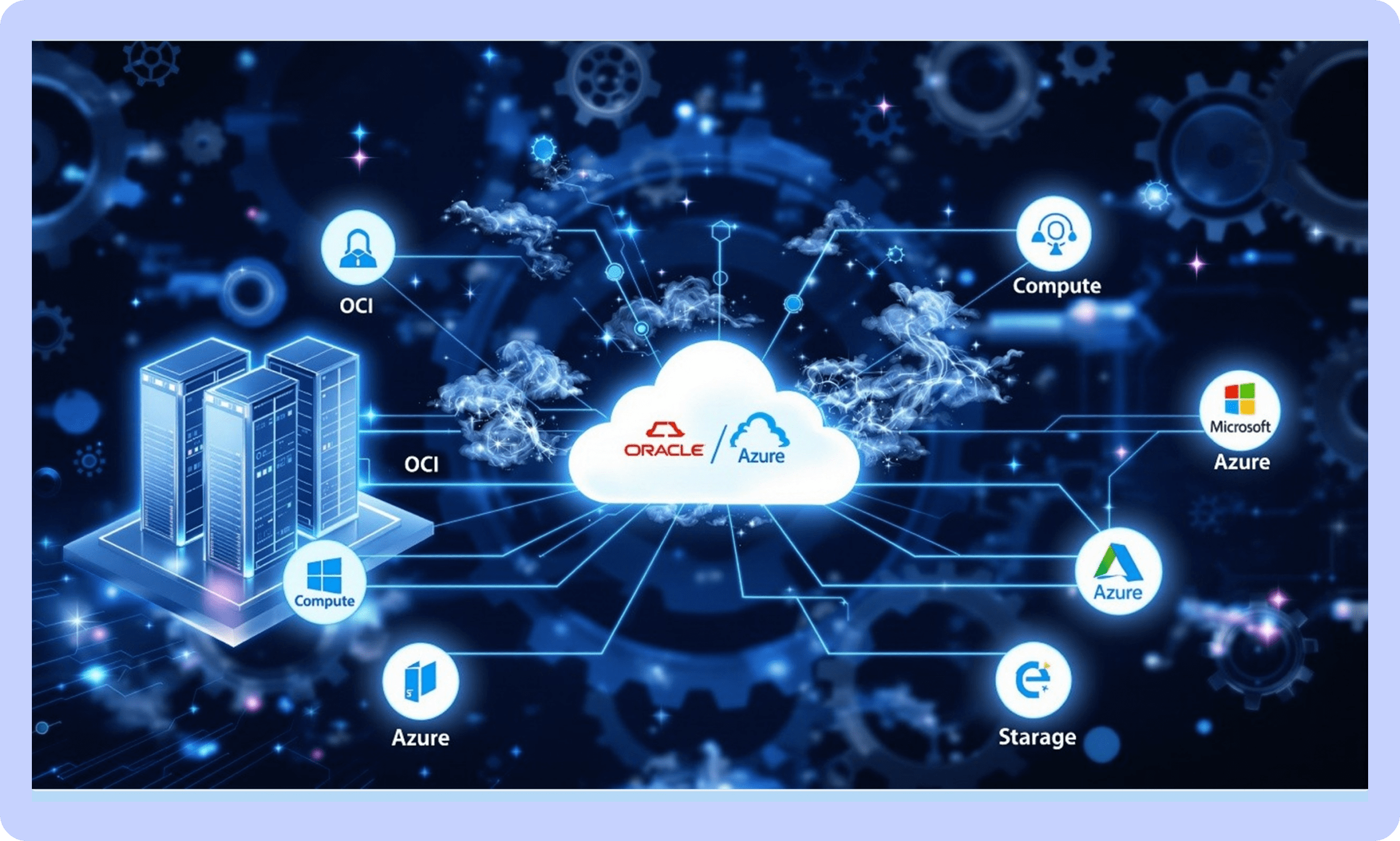
Why Hybrid Cloud Integration?
Hybrid cloud integration allows organizations to:
- Maximize Flexibility : Maintain sensitive or legacy workloads on-premises while offloading scalable and dynamic workloads to the cloud.
- Optimize Costs : Allocate resources based on performance needs and cost efficiencies.
- Enhance Resilience : Distribute workloads across on-premises and cloud environments to improve business continuity and disaster recovery.
- Accelerate Innovation : Leverage cloud-native services, such as AI, analytics, and automation, alongside established on-premises systems.
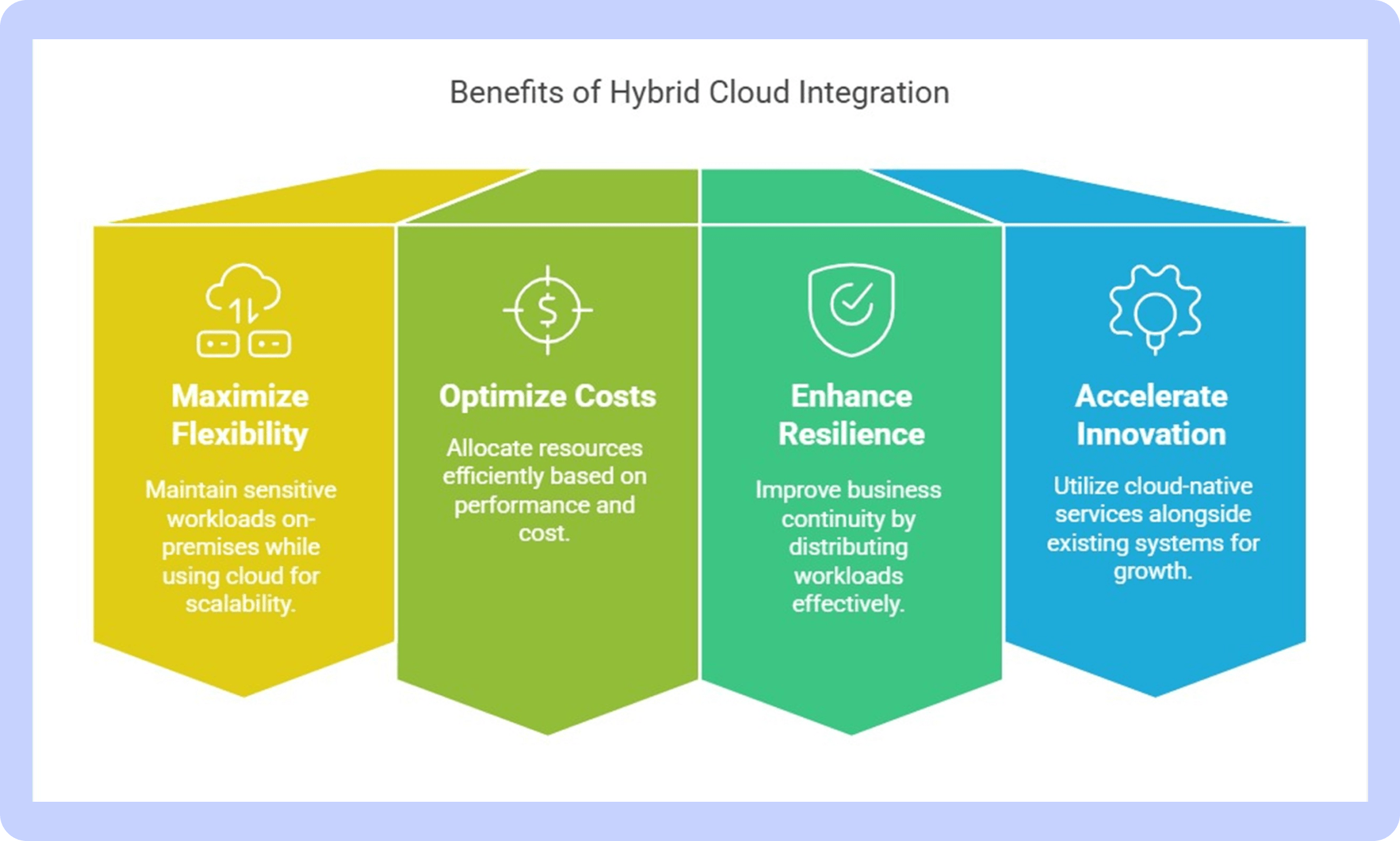
Overview of OCI and Azure Hybrid Capabilities
Oracle Cloud Infrastructure (OCI)
OCI is renowned for its enterprise-grade performance, security, and cost-effective scalability. Key hybrid features include:
- Oracle FastConnect : Offers a dedicated, low-latency connection between on-premises data centers and OCI, ensuring consistent performance and enhanced security.
- Integrated Data Management : Seamlessly connect on-premises databases with Oracle’s cloud-based autonomous services, facilitating real-time data analytics and processing.
- Robust Compute Options : Support for high-performance computing tasks enables legacy applications to run efficiently when integrated with modern cloud services.
Microsoft Azure
Azure provides an extensive suite of hybrid cloud solutions that bridge the gap between onpremises and cloud environments:
- Azure ExpressRoute : Establishes a private connection to Azure that bypasses the public internet, reducing latency and improving reliability.
- Azure Arc : Extends Azure management and governance to on-premises, multi-cloud, and edge environments, providing unified oversight across diverse infrastructures.
- Hybrid Identity Solutions : Integrates on-premises identity management with Azure Active Directory to ensure secure and seamless user authentication across environments.
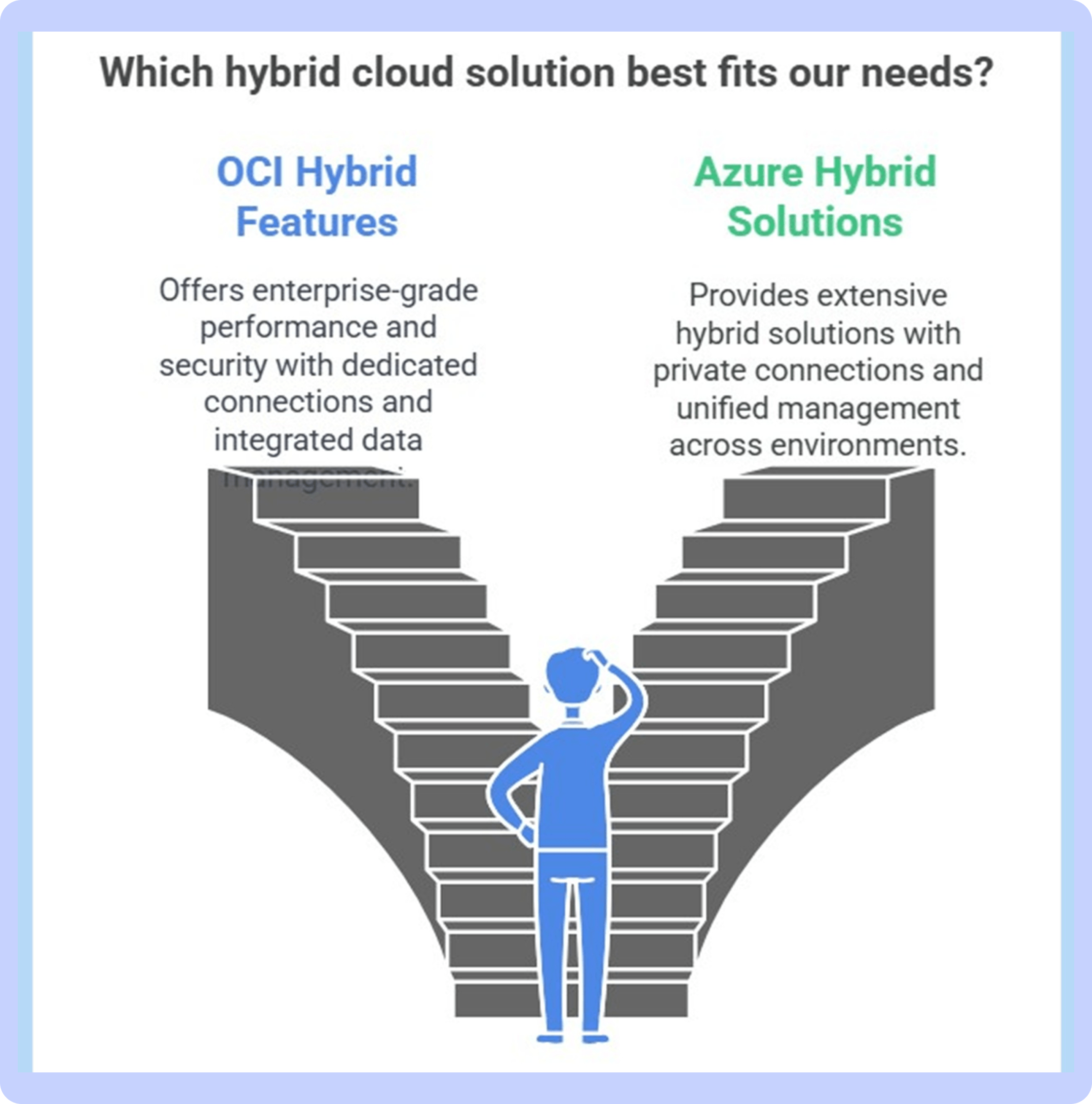
Key Considerations for a Successful Hybrid Integration
When planning a hybrid cloud strategy that combines OCI and Azure, consider the following best practices:
1. Define Clear Objectives
- Workload Assessment: Determine which applications and data are best suited for onpremises, OCI, or Azure environments..
- Strategic Goals: Identify business outcomes such as enhanced security, improved performance, or cost savings that drive the integration strategy.
2. Ensure Robust Connectivity
- Dedicated Network Links : Use solutions like Oracle FastConnect and Azure ExpressRoute to create secure, high-speed connections between environments.
- Latency Management : Monitor and optimize network performance to minimize latency, especially for mission-critical applications.
3. Unified Identity and Access Management
- Centralized Security : Implement a single identity management solution to govern access across on-premises systems, OCI, and Azure.
- Compliance : Regularly review and update security policies to ensure compliance with industry regulations.
4. Automation and Orchestration
- Streamline Deployments : Utilize automation tools and APIs to orchestrate deployments and manage workloads across environments.
- Consistent Management : Leverage platforms like Azure Arc for a unified view of your hybrid environment, reducing management overhead. .
5. Plan for Scalability and Future Growth
- Flexible Architectures : Design systems that can easily scale up or down based on demand, taking advantage of the elastic nature of cloud resources.
- Continuous Monitoring : Regularly assess system performance and make adjustments to accommodate growth and evolving business needs.
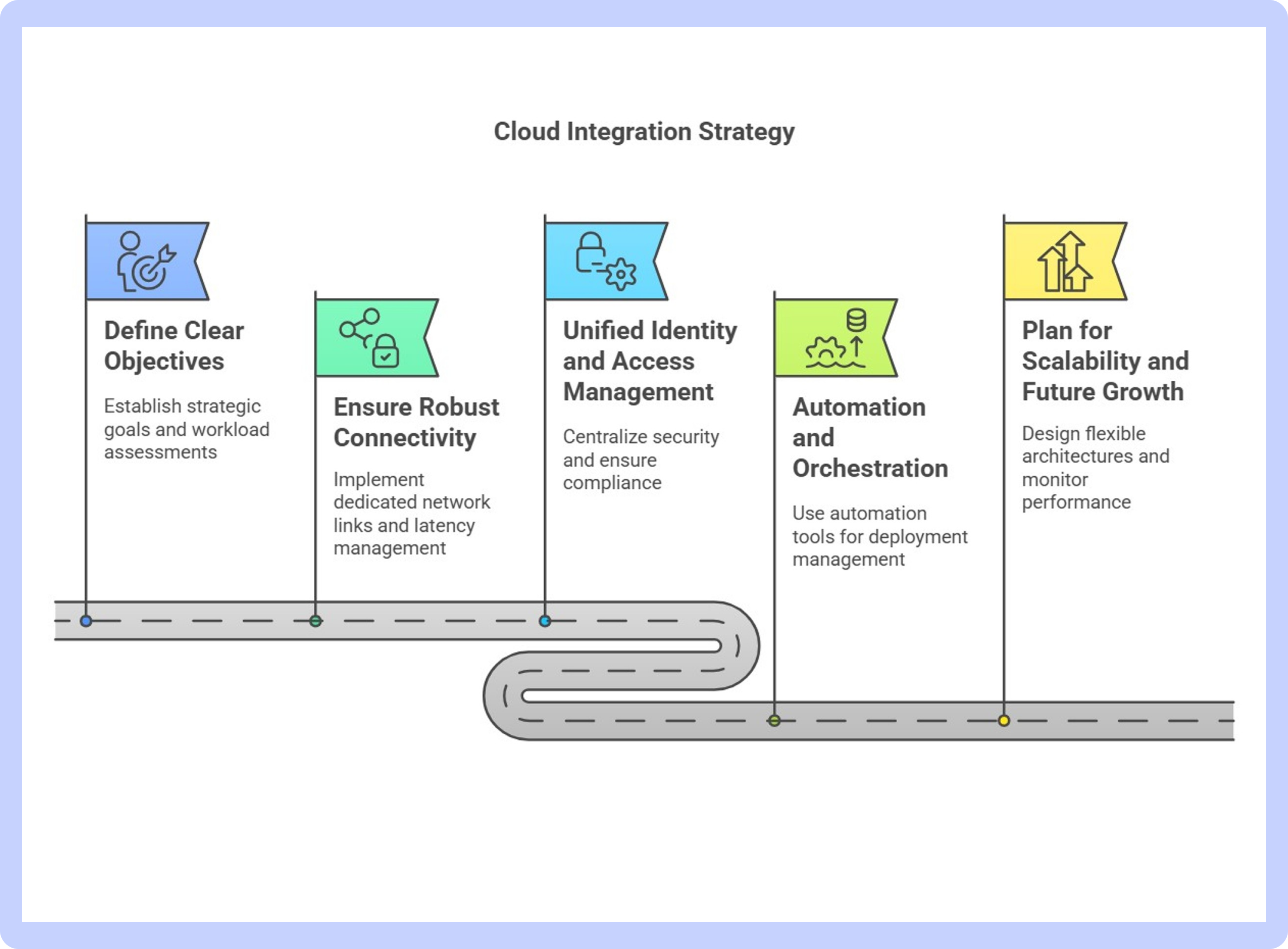
Real-World Use Cases
Integration Use Cases and Scenarios
Application Modernization
Organizations with legacy applications can migrate critical workloads to OCI for improved performance, while still keeping sensitive data on-premises. Azure’s developer tools and cloudnative services enable rapid modernization, ensuring that applications remain competitive and agile.
Disaster Recovery and Business Continuity
A hybrid model allows businesses to maintain a robust disaster recovery strategy by replicating critical applications and data across on-premises systems and both cloud platforms. This distributed approach minimizes downtime and ensures quick recovery in case of outages.
Data Analytics and AI Integration
By combining OCI’s powerful data management capabilities with Azure’s advanced analytics and AI services, enterprises can harness actionable insights from their data. This integration supports real-time decision-making and drives digital transformation initiatives.
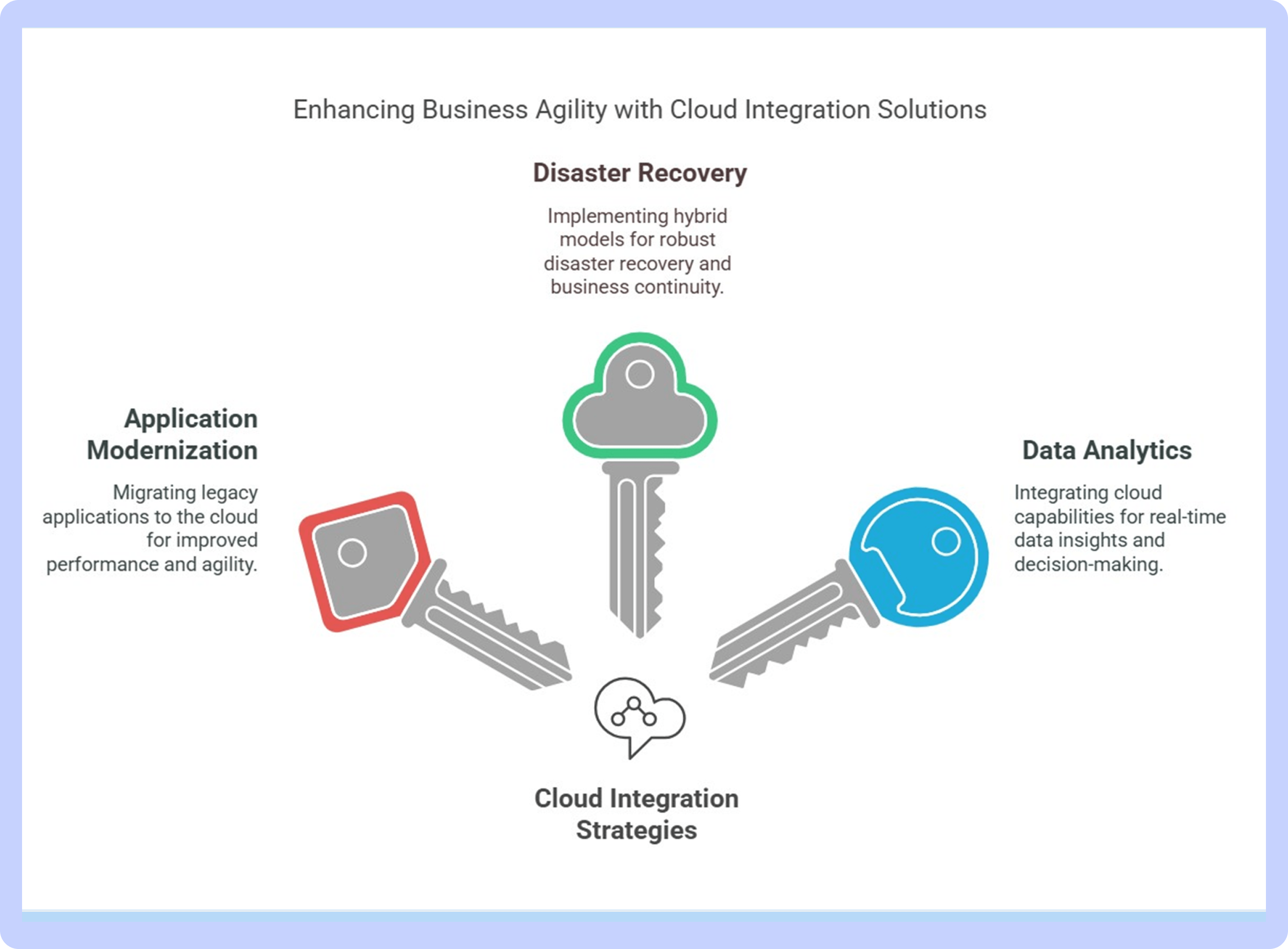
Challenges and Mitigation Strategies
While the benefits of hybrid cloud integration are significant, organizations must be prepared to address potential challenges:
1- Integration Complexity:
The blend of on-premises, OCI, and Azure systems can lead to increased complexity. A well-planned architecture and the use of orchestration tools are key to mitigating these issues. .
2- Security Risks:
With data spread across multiple environments, maintaining consistent security policies is crucial. Regular audits and centralized security management can help safeguard the integrated system.
3- Management Overhead:
Monitoring and managing diverse platforms can be resourceintensive. Leveraging unified management tools like Azure Arc can streamline oversight and reduce operational burdens.
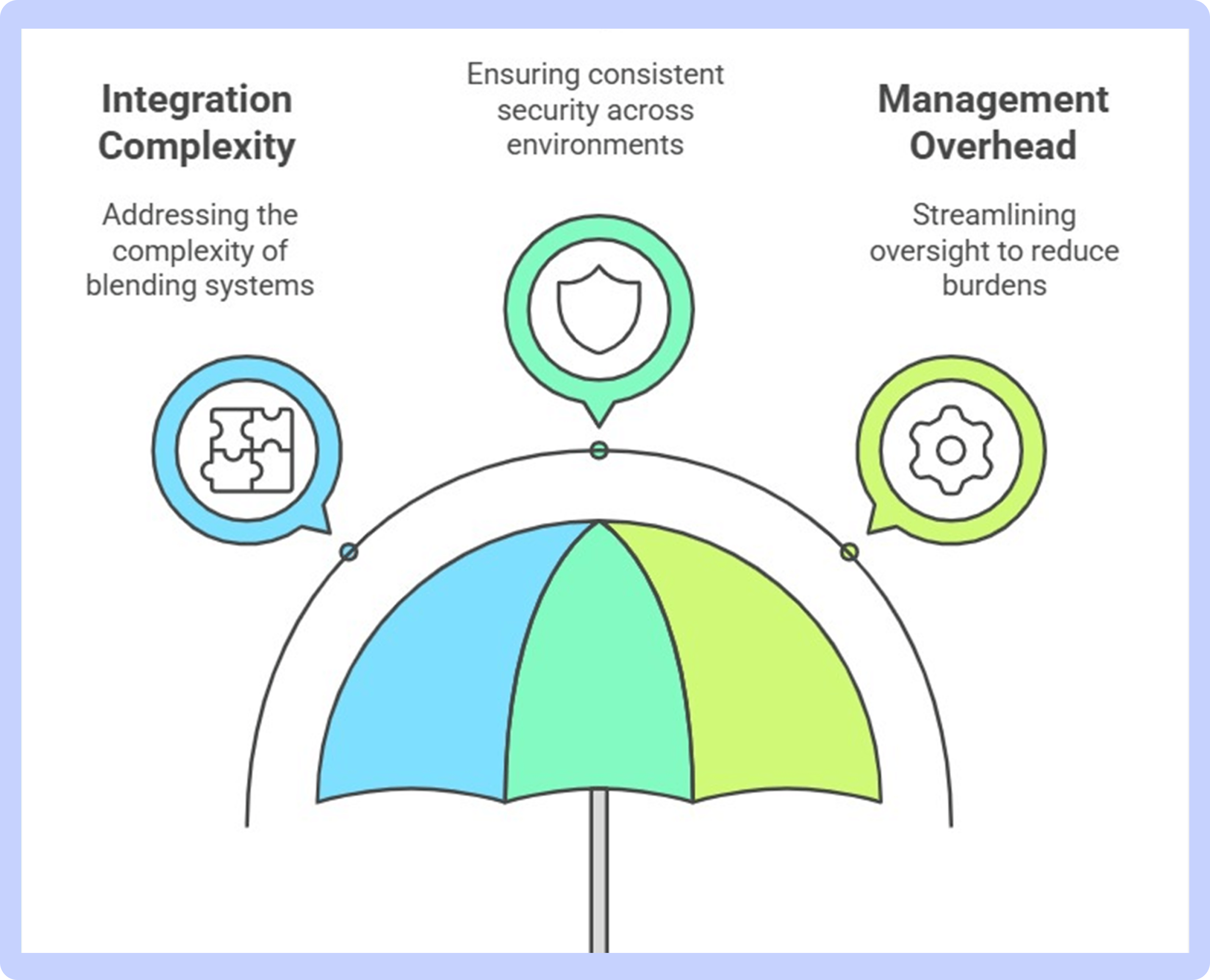
Conclusion
Embracing this hybrid approach not only optimizes current IT infrastructures but also lays the foundation for future digital transformation. As enterprises continue to navigate the complexities of modern computing, the synergy between OCI and Azure will undoubtedly play a pivotal role in shaping resilient, adaptable, and forward-thinking IT strategies.
